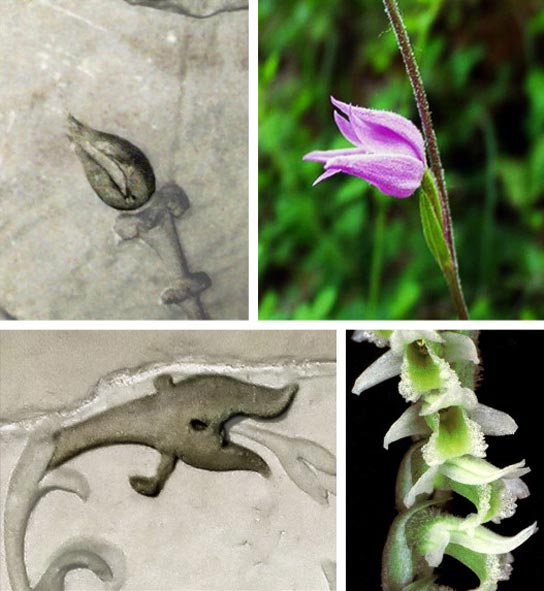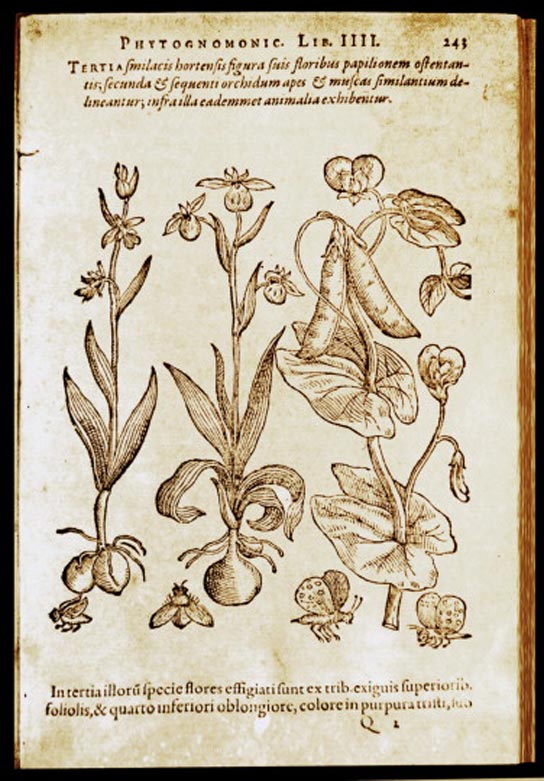
The Ara Pacis, an altar erected in Rome by the emperor Augustus in 9 B.C.E., includes one of the earliest documented depictions of an orchid (inset) in Western art. Credit: Bernd Haynold/Wikimedia Commons
A careful study of ancient artifacts in Italy has pushed back the earliest documented appearance of orchids from the Renaissance to Roman times. The orchid’s popularity in public art seemed to decrease with the advent of Christianity, perhaps because of its associations with sexuality.
The scientists published their findings in the Journal of Cultural Heritage. The shapes and bright colors of orchids have always made the flower popular among fanciers and botanists, but it’s their symbolic value, which many cultures associate with a resemblance to both male and female sexual organs, that is also part of their allure. Even its name, Orchis, is derived from the Greek word for testicles.

Cephalanthera sp. on the frieze of Ara Pacis (upper left); the flower in the wild (upper right). Spiranthes spiralis (L.) Chevall on the frieze of Ara Pacis (bottom left); the plants in the wild (bottom right).
While the flower’s biology and ecology has gotten plenty of attention, its phytoiconography, or how the flower has been used symbolically in art, has been less studied. Giulia Caneva, of the University of Rome, with several graduate students set out to change this. She began assembling a database of Italian artifacts, which included paintings, textiles, and stone carvings that included plants or vegetation. Then, they began to analyze the different plants that were represented.
The depictions of Italian orchids showed up much earlier than expected. Previously they were spotted in paintings in the 1400s, but Caneva’s team discovered them as early as 46 B.C.E, when Julius Caesar erected the Temple of Venus Genetrix in Rome. There are at least three orchids appearing in dozens of other plants on the Ara Pacis, a massive stone pillar erected by the emperor Augustus in 9 B.C.E. Artists chose the flowers to emphasize a theme of civic rebirth, fertility and prosperity following a long period of conflict.
As Christianity began to influence art in the 3rd and 4th centuries, orchids and other plants began to fade from public art. This was probably due to an effort to eliminate pagan symbols and those related to sexuality. With the arrival of the Renaissance, orchids arrive back in art, but now mostly as a symbol of beauty and elegance.

Signatura rerum, the theory of signature: orchids images from G.B. Della Porta (1588).
Reference: “Orchids in the Roman culture and iconography: Evidence for the first representations in antiquity” by Alma Kumbaric, Valentina Savo and Giulia Caneva, 12 October 2012, Journal of Cultural Heritage.
DOI: 10.1016/j.culher.2012.09.002









Be the first to comment on "Human Obsession With Orchids Goes As Far Back As Roman Times"